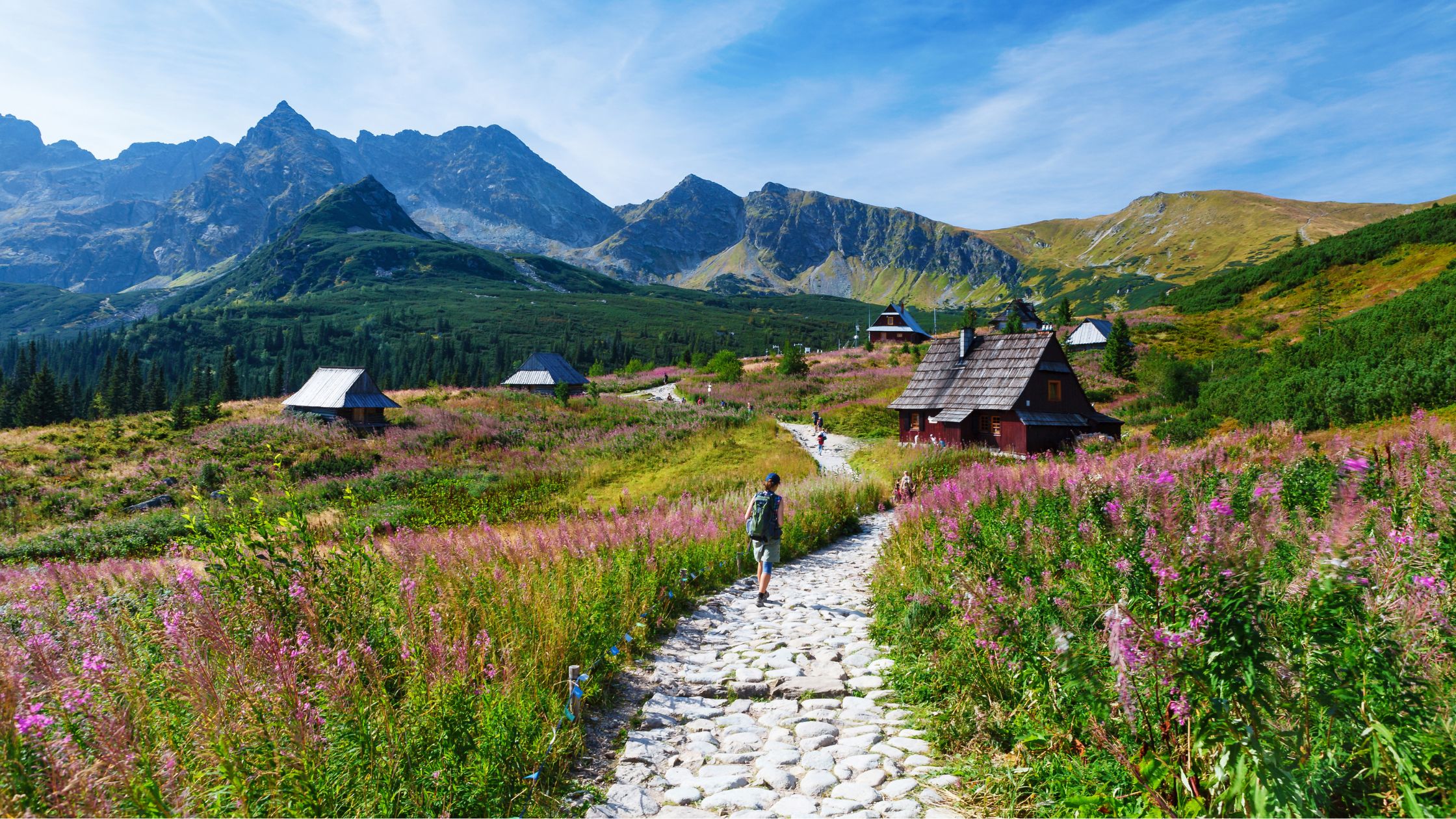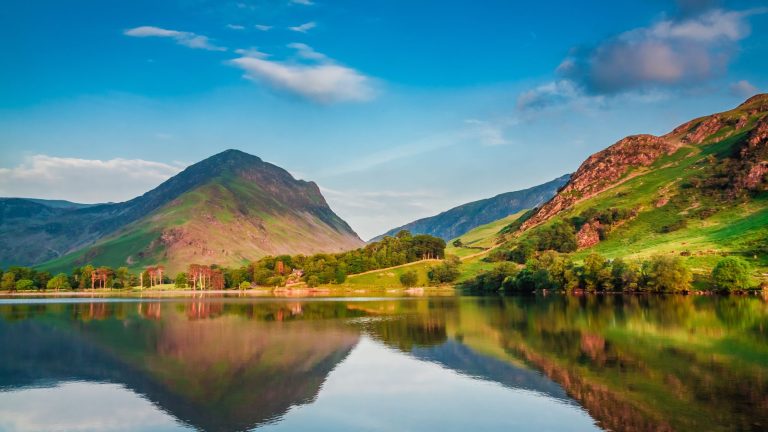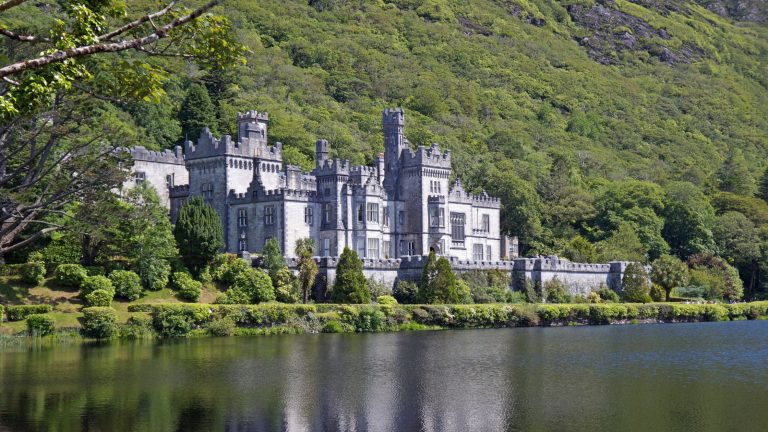Poland’s hidden lake paradise awaits your family
You’ve likely never considered Poland for a lake vacation, yet this Central European gem is home to over 2,000 pristine lakes in the Masurian region alone—earning it the poetic nickname “Land of a Thousand Lakes.”
The reality exceeds the myth. This is where your family can paddle crystal-clear waters through green cathedral forests, sail across Poland’s largest lake on routes once traveled by Prussian merchants, and discover Europe’s most dramatic moving sand dunes before retreating to lakefront cottages that cost a fraction of Alpine alternatives. When Mediterranean crowds overwhelm and Scandinavian prices shock, Poland’s lakes offer premium experiences at accessible prices, especially during shoulder seasons when vacation rentals drop 20-37% below peak rates.
The Masurian Lake District dominates northeastern Poland as the country’s undisputed aquatic jewel. Lake Śniardwy stretches 114 square kilometers—locals call it the “Masurian Sea”—while Lake Mamry unfolds across 105 square kilometers with 33 islands waiting to be explored. These aren’t isolated water bodies but an interconnected system linked by rivers and canals, creating what amounts to Europe’s finest inland waterway for family adventures.
The lakes, among other astounding features, remind you that your top things to do in Poland list awaits!
The region earned finalist status for the New 7 Wonders of Nature, yet remains refreshingly undiscovered by mass tourism. Water quality ranks first-class throughout, the surrounding Puszcza Piska forests breathe as Poland’s “green lungs,” and the combination of Prussian history with pristine nature creates a destination that educates as it exhilarates.
Your base of operations: Giżycko and Mikołajki
Positioning yourself in the Masurian heartland means choosing between two lakeside towns, each offering distinct personalities yet sitting just 45 minutes apart. Giżycko claims the title of “Poland’s Sailing Capital,” straddling an isthmus between Lake Niegocin and Lake Kisajno. The town pulses with maritime energy centered around its modern Ekomarina—one of Poland’s largest yacht harbors where hundreds of white sails create forest-like vistas in summer. The 19th-century Boyen Fortress beckons children through labyrinthine walls and corridors, transforming history lessons into adventure. A 400-meter pier extends into Lake Niegocin, perfect for sunset strolls while passenger boats from the historic White Fleet glide past. The town beach stretches over 200 meters of supervised sandy shore with adjacent volleyball courts and playgrounds, offering immediate water access within walking distance of your accommodation.
Mikołajki embraces its moniker as “The Lake Capital of Poland” with small-town charm that feels authentically Polish rather than tourist-manufactured. This compact sailing village between Lake Mikołajskie and Lake Tałty positions you within minutes of Lake Śniardwy’s vast expanse. St. Nicholas Church’s 40-meter viewing tower rewards the climb with panoramic vistas across interconnected waters, while the bustling Sailing Village port thrums with activity as yachts arrive and depart throughout summer days. When rain threatens your lake plans, the Tropikana Aquapark at Hotel Gołębiewski provides Europe-class indoor water entertainment. The waterfront promenade maintains that essential maritime atmosphere—Polish shanties drifting from taverns, the Chopin sailing ship (Poland’s largest inland vessel) departing on tours, children chasing the town’s beloved stork mascot.
Vacation rental options span from budget-friendly apartments starting at €34 nightly to premium lakefront cottages with private jetties, many including kayaks and boats as standard equipment. Booking platforms like Airbnb, Booking.com, and regional specialist Casamundo reveal that a comfortable two-bedroom lakeside cottage averages €500-800 weekly during peak July-August season, with shoulder season May-June and September rates dropping 25-35% while facilities remain operational. Properties frequently occupy forested shorelines rather than developed resort strips, meaning your morning coffee accompanies loon calls and lapping waves rather than jet ski noise.
What water activities will fill your days?
The Masurian lake system exists for families who want water time without the constraints of hotel-based vacations. Your days unfold with flexibility impossible at traditional resorts. The White Fleet’s Żegluga Mazurska operates Poland’s premier lake cruise network from both Giżycko and Mikołajki ports, with vessels ranging from intimate motorboats to the impressive sailing ship Chopin styled as a 19th-century brig. The signature Giżycko-Mikołajki route departs at 9:00 and returns at 18:30, traversing Lakes Niegocin, Jagodne, and Tałty while allowing a lunch break for exploring Mikołajki’s waterfront restaurants and shops. Adults pay 219 PLN (approximately €51) while children aged 5-15 ride for 129 PLN (€30)—reasonable pricing for a full day’s journey with spectacular scenery. Shorter options include the one-hour Swan Trail circuit around Giżycko’s island for just 45-50 PLN (€11-12) per adult, perfect when younger children need action without marathon commitments.
Kayaking the Krutynia River ranks among Europe’s premier lowland paddling experiences, yet most Americans have never heard of it. This 102-kilometer waterway flows through Masurian Landscape Park with water so transparent that you’ll watch pike dart between submerged logs as if paddling through an aquarium. The most popular family-friendly section runs from Krutyń village to Ukta—a gentle 13-kilometer journey requiring three to four hours with just one 100-meter portage. No previous experience proves necessary; the current flows slowly and safely, with average depths around 65 centimeters in many sections. Multiple operators including the established AS-TOUR offer kayak rentals starting around 70 PLN (€16) daily for single kayaks, with life jackets, transfers back to start points, and maps included. Wildlife sightings pepper the journey: white-tailed eagles perched in dead pines, kingfishers flashing blue as they dive, beaver lodges along forested banks, and perhaps wolves calling from deeper in Puszcza Piska forest.
Stand-up paddleboarding grows increasingly popular on Masurian waters, with rental locations at major marinas in both Giżycko and Mikołajki offering boards with paddles and life jackets for approximately 40-80 PLN (€9-19) hourly. Many vacation rental properties now include SUPs alongside traditional rowing boats and kayaks, expanding your aquatic options without additional cost. The interconnected lake system means you can paddle from your cottage dock and explore dozens of kilometers of shoreline, discovering hidden beaches and observation points inaccessible by land.
For families seeking structured sailing experiences without certification requirements, several operators offer skippered yacht charters where professional captains handle navigation while teaching interested crew members the fundamentals. Bareboat rentals require proper licensing, but license-free houseboats from companies like JachtTravel provide self-guided adventures sleeping six to eight across multiple cabins with full kitchen facilities—essentially floating vacation homes that relocate to different anchorages each evening.
Where else should water-loving families explore Poland?
The Baltic coast’s Słowiński National Park delivers one of Europe’s most extraordinary natural phenomena just two hours northwest of the Masurian heartland, making it an ideal two-day excursion from your lake base. Massive sand dunes migrate inland at 3-10 meters annually, literally swallowing pine forests and leaving fossilized tree stumps protruding from sandy moonscapes—earning the area its “Polish Sahara” nickname. These formations tower 30-42 meters high, creating dramatic hiking terrain that children experience as desert adventure. The dunes separate three coastal lakes from the Baltic Sea, with Lake Łebsko spanning 71 square kilometers as Poland’s third-largest lake. Water activities flourish here too: electric boat cruises traverse the lakes, while designated Baltic beaches provide that essential seaside complement to your inland lake vacation. Park entrance costs just 6-9 PLN (€1.40-2.10) per adult from May through September with free access during October-April off-season months. The charming beach town of Łeba serves as the gateway, located just three kilometers from park entrances.
Water parks provide essential weather contingencies for families who refuse to let rainy days derail vacation momentum. Suntago Water World near Warsaw claims distinction as Europe’s largest indoor water park, maintaining climate-controlled 32°C temperatures year-round across 35 water slides and wave pools beneath 740 live palm trees. All-day admission purchased 14+ days advance costs 130 PLN (€30) for adults and 110 PLN (€25) for children under 16, with shorter duration tickets available if you’re combining it with Warsaw sightseeing. Energylandia in Zator near Kraków bundles water park access into general admission tickets ranging 189-219 PLN (€44-51) per adult depending on season—notable value considering this includes access to roller coasters and all amusement park attractions alongside the water zones.
The Dunajec River in Pieniny National Park offers whitewater rafting adventures suitable even for younger children, with traditional wooden rafts piloted by experienced górale (highlanders) in distinctive folk costumes navigating the gorge forming Poland’s natural border with Slovakia. The 18-kilometer journey takes approximately 2.5 hours, with adults paying around 110 PLN (€26) and children aged 4-12 at 78-80 PLN (€18-19). This quintessential Polish experience combines gentle rapids with spectacular mountain scenery and cultural immersion—an unforgettable day trip from either Masurian or Kraków bases that shows Poland’s geographic diversity.
Can we enjoy Polish lakes beyond summer?
Spring arrives gloriously in Masuria during May and early June when nature awakens with wildflower carpets and migratory bird arrivals while tourist crowds remain minimal. Water temperatures prove swimmable by late May for hardier families, with kayaking conditions actually superior to summer thanks to higher water levels and uncrowded rivers. Vacation rental prices during these shoulder months drop 25-35% below July-August peaks while virtually all facilities operate normally—representing exceptional value for families with flexible school calendars. September delivers similar advantages with the added bonus of autumn foliage painting forests in amber and crimson. Operators confirm that weather during these months often equals or exceeds summer quality, minus the peak-season congestion and inflated pricing.
Winter transforms Masuria into a completely different destination when lakes freeze solid from December through February. Traditional ice skating, ice sailing reaching thrilling speeds, and ice fishing through drilled holes become primary activities, with dramatically fewer tourists creating peaceful isolation. Several campgrounds maintain year-round operations with heated facilities and saunas for warming between outdoor adventures. The Tatra Mountains just six hours south offer Poland’s premier skiing from mid-December through March via the Tatry Super Ski system connecting 19 resorts. A five-day ski pass costs approximately €150, with the famous Kasprowy Wierch cable car to 1,987-meter peaks requiring 99-139 PLN (€23-32) for round-trip tourpass tickets booked online in advance. This creates intriguing possibilities for off-season Polish adventures: ski mornings in the Tatras followed by afternoon thermal bath soaks, then return to your lakeside cottage at fraction of summer rates.
What complementary experiences enrich your lake vacation?
Poland’s compact geography allows day trips from your Masurian base that transform a simple lake holiday into comprehensive cultural immersion. The port city of Gdańsk lies just 1.5-2 hours northwest, where reconstructed Old Town architecture rivals anything in Prague while the European Solidarity Centre chronicles the shipyard strikes that toppled European communism. Harbor cruises on the Motława River show the city from water level—maintaining your aquatic theme—while the historic granaries and St. Mary’s Church (world’s largest brick church) reward exploration. Malbork Castle sits perfectly positioned between Masuria and Gdańsk, with this UNESCO World Heritage fortress and world’s largest brick castle charging just 80 PLN (€19) for adults and 60 PLN (€14) for students on comprehensive historical routes requiring 3-4 hours to properly experience.
Warsaw’s Vistula River boulevards have undergone renaissance transformation into family-friendly parks with beaches, playgrounds, and bike paths—making Poland’s capital surprisingly water-adjacent if you’re connecting your lake vacation with urban experiences. The Tatra Mountains’ Zakopane resort town positions cable cars and easy valley hikes within comfortable day-trip distance from southern Poland explorations, while Kraków’s proximity to both Wieliczka Salt Mine (UNESCO site with admission 134-146 PLN or €31-34 depending on season) and Wawel Castle creates natural combinations for families wanting medieval history alongside lake relaxation.
Why Poland’s lakes deserve your family’s next vacation
This remains Poland’s moment before mass discovery. The Masurian Lake District delivers authentic European lake experiences at prices that make Alpine destinations seem absurd, with infrastructure sophisticated enough for comfortable family travel yet undeveloped enough to feel adventurous. You’ll paddle rivers where white-tailed eagles outnumber tourists, sail across inland seas with horizons extending to hazy infinity, and watch your children’s faces illuminate when sand dunes materialize where forests should be. Vacation rentals with private lake access and included water equipment provide home bases impossible to replicate at conventional resorts, while shoulder-season pricing proves so compelling that September or June visits become smarter choices than crowded August weeks. Poland combines Central European accessibility with Eastern European affordability and natural beauty rivaling Scandinavia, a combination rarely found in modern Europe. Your family’s lake vacation awaits in a country most travelers overlook, and that oversight remains your advantage.






